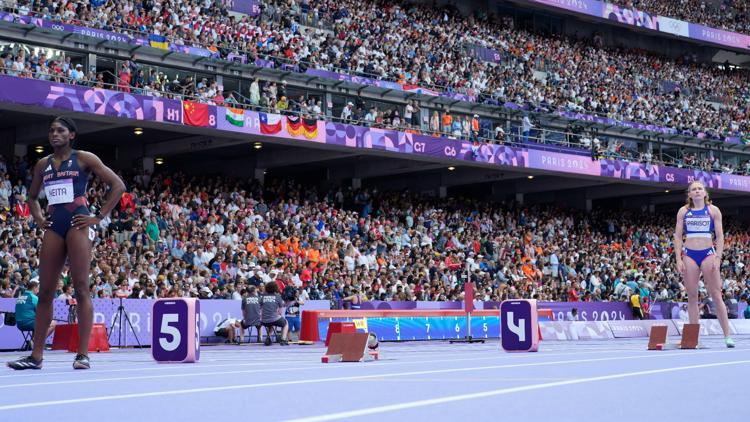PARIS, France — Whether it’s on the purple track in Paris or your local high school meet, some track races require runners to start at different places depending on the event.
“The essential requirement for all start lines, straight, staggered or curved, is that the distance for every athlete, when taking the shortest permitted route, shall be the same,” according to the World Athletics technical rules.
World Athletics, which governs track and field, established the standard length of a track as two straightaways at 84.39 meters in length and each turn is 36.5 meters in length.
From start to finish, one lap in lane 1 is 400 meters in length. If a runner in lane 8 started where lane 1 does, that runner would travel approximately 453 meters – which is 53 meters further than the runner in lane 1.
In the 100-meter race, all athletes begin at the same starting line because the distance they are running is a straightaway and there is no variation in length.
For races such as the 200-meter (half a lap on the track) and 400-meter races (one full lap), runners stay in their lanes the entire time and must have a staggered start to ensure each athlete runs the same distance around the track.
To accommodate the distance differences, starting lines are staggered for the 200-meter, 400-meter, 400-meter hurdles and 800-meter races, along with 4x100, 4x200 and 4x400 relays.
In long distances races with more athletes, like the 1,500 or 3,000-meter races, runners start in a curved waterfall line and move into lane 1 after the first turn on the track, at a point known as the breakline.
How are lanes assigned?
According to World Athletics, officials complete three draws to determine lane assignments.
The first drawing for the four fastest athletes determines lanes 3, 4, 5 and 5; the next drawing for the fifth and sixth fastest athletes determines lanes 7 and 8; and the final drawing for the two lowest ranked athletes determines assignments for lanes 1 and 2.



